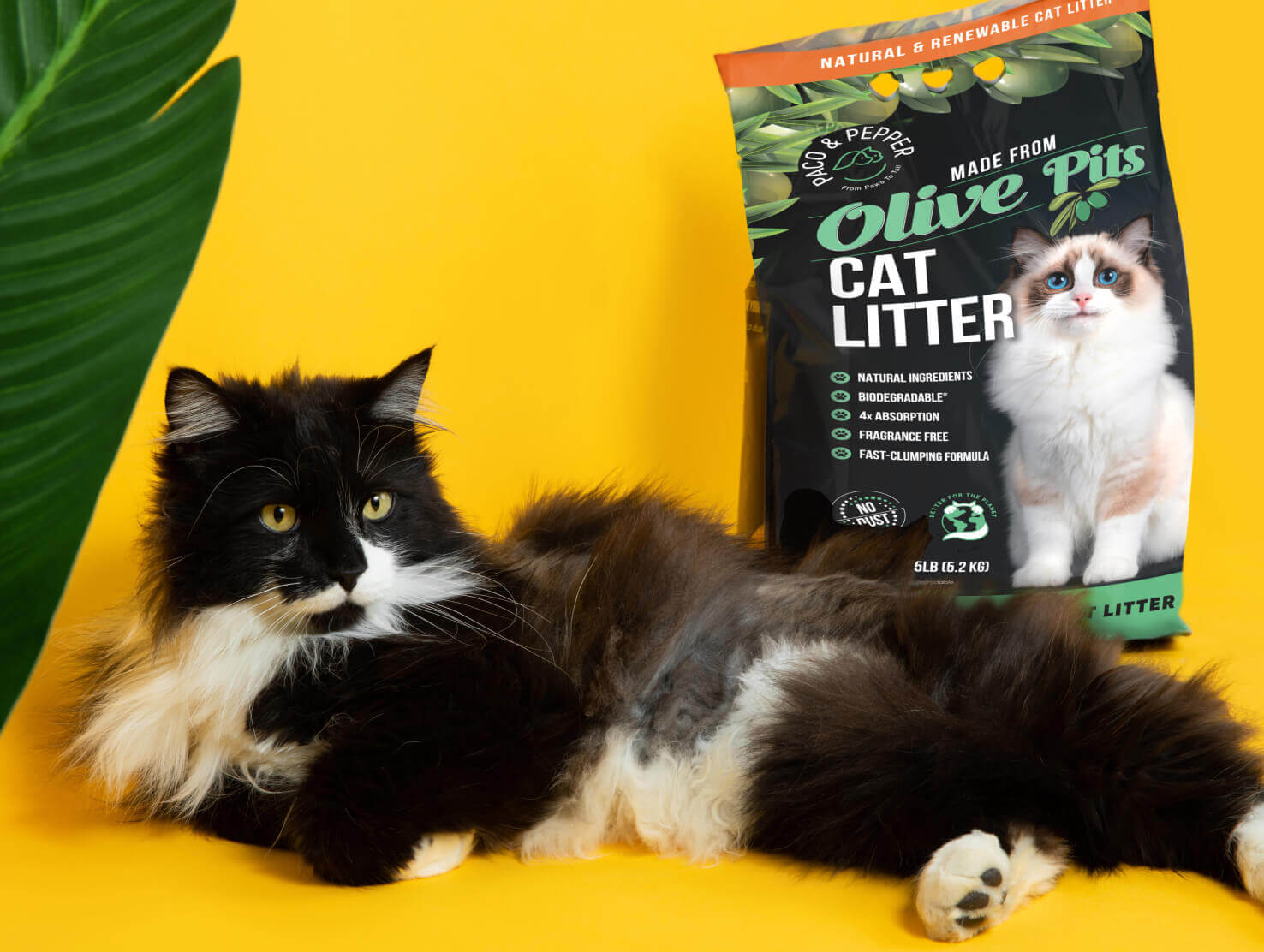Clumping vs non clumping cat litter

Most cat owners base their choice on clumping or non-clumping litter without fully understanding the pros and cons of each type. What's the difference between clumping and non clumping cat litter? The main advantage of clumping litter is the ease of cleaning of the litter box. However, it also has disadvantages regarding cats' health and the environment. Some owners, in an effort to avoid potential health problems, choose non-clumping litter, unaware that it can also cause problems depending on its composition.
This article compares the properties of clumping and non-clumping cat litter, including their characteristics and the materials used in their production. Understanding their features should help you choose the right type of litter for your cat.
Difference between clumping and non clumping litter
Clumping cat litter
Clumping cat litter is made by chemically treating the raw material, which allows the particles, when interacting with liquid, to stick together, forming solid clumps that can be easily removed from the litter box without completely replacing the litter. Clumping litters usually contain quartz or diatomaceous earth, sometimes silica powder, which is sometimes considered a weak carcinogen. There are also clumping litters made from natural materials that do not cause any harm to your cat's health.
How clumping works
Clumping litter is primarily made from sodium-rich bentonite clay, which also contains calcium, aluminum, magnesium and iron. Because sodium ions can absorb more moisture than calcium ions, wet litter clumps together, making it easy to pick up and remove clumps of litter. This means that there is no need to replace all the litter; you just need to top it up as needed. Because the urine absorbed by the litter is "locked" in the bolus, the ammonia odor is not released.
Benefits of clumping cat litter
Clumping litter is very easy to remove from cat litter. There is no need to replace the entire litter; Simply removing clumps helps maintain the correct litter level while keeping the tray clean and fresh. As litter usage decreases, these litters need to be purchased less regularly.
Disadvantages of clumping litters
The disadvantages of clumping litters include their higher cost compared to non-clumping litters, despite the fact that they require less frequent replacement. Additionally, most clumping litters are made from non-degradable ingredients, which can be harmful to the environment.
Most clumping litters are not recommended for kittens due to the risk of them ingesting particles during grooming. This can lead to intestinal blockage if the litter accumulates in the digestive tract. Some cat owners also believe that if litter clumping poses a risk to kittens, it may similarly affect adult cats since they have similar grooming behaviors.
Paco&Pepper cat litter
Our litter is made from biodegradable olive pits. It does not harm the environment in any way, and ingesting it will not harm your cat until she swallows an entire 11.5 bag.
Advantages of non-clumping litters.
Non-clumping litters are noticeably cheaper than clumping ones, but do not forget that their consumption compared to clumping ones is significantly higher.
Disadvantages of non-clumping litters.
Most non-clumping litters produce quite a bit of dust. The resulting dust can enter the respiratory tract and cause irritation for cats or owners with allergies. The litter must be changed at least once a week. The litter consumption is quite large and it must be constantly thrown into a landfill.
What litter do cats prefer?
The fact that there are so many different types of cat litter suggests that there is no single answer. What is better clumping or non clumping cat litter? Different cats prefer different types of litter, and choosing the right one has to be done through trial and error, taking into account your cat's behavior and wishes.
Which litter to choose - clumping vs non-clumping kitty litter?
It all comes down to preference, but there are some key factors to consider that will help you choose the best one on the market. Good moisture absorption and odor elimination are the basic requirements for any type of litter. It must be easy to use and partially replaceable to reduce consumption and therefore cost. The litter should not be dusty, since dust is not only a source of dirt, but also a very strong allergen. The ideal option is Paco&Pepper litter. It is made from natural materials, is dust-free and is also made from biodegradable materials, making it very practical and environmentally friendly.

